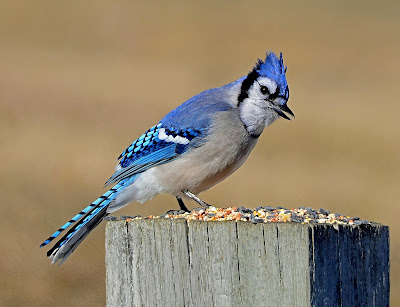Nature News: Red squirrels love to stash away pine cones
I was out hiking with a friend when a red squirrel accosted us on the trail, clearly wanting something to eat. It sat up on a rock, its tail quivering, it jumped down and moved closer. I took out my phone and snapped some photos before disappointing it and walking away.
 |
| A red squirrel hoping for a bit of food to be tossed its way by Sue Pike |
I feel like I’ve known red squirrels my entire life. They lived in the big spruce trees behind my childhood house and left little piles of picked-over pine cones among the mossy stumps. When I was little, my father would read to us from the Burgess Animal Book. What I remember most about that book is a random line: “Chatterer the Red Squirrel had been scolding because there was no excitement.” This character - Chatterer - was always getting into trouble with Old Mother West Wind because he never seemed able to keep his thoughts to himself. My backyard red squirrels were just like Chatterer; big personalities - tiny but fiesty, and very vocal, aggressively defending their territory with loud barks and chatters, stamping their feet at me in what looked like a paroxysm of rage if I got too close.
My favorite toy at the time was a little plush squirrel that I named Ratatoskr for the red squirrel (the Eurasian red squirrel, not the American red squirrel) from Norse mythology that lived on the world tree, Yggdrasil - carrying messages and spreading gossip. My childhood brushes with these fictionalized accounts of the red squirrel speak to this squirrel’s ability to capture our imagination. We anthropomorphize their seemingly fearless and noisy behavior as gossiping or instigating trouble – neither of which behaviors a real wild squirrel would engage in – much too risky.
Red squirrels (also called pine squirrels or chickarees) are small squirrels that live in coniferous and mixed-deciduous forests across subarctic and temperate North America. While red squirrels love pine nuts, they are complete omnivores, consuming a wide variety of food – seeds and nuts, fruit and fungi, insects and amphibians, bird eggs, even small mammals. In the north, they are a significant predator of baby snowshoe hares. They collect mushrooms and hang them up, wedging them in between branches so they’ll dry out and store better. Red squirrels are also adept at tapping trees for sap. They know how to chew through the bark when the sap is running.
Their scientific name, Tamiasciuirus hudsonicus, means “shadow-tailed nut hoarder of Hudson Bay,” alluding to their habit of stashing large numbers of pine cones in large piles (middens). They cut unopened, green pine cones from trees to ensure they haven’t already opened and dropped their seeds and then cache these whole pine cones deep in middens where it is dark and cool and wet; a low-oxygen environment that keeps the seeds fresh. One squirrel can stash more than 10,000 cones in the course of one year. The pine nuts in these tightly sealed cones can remain viable for decades. Middens can also be refuse piles, a red squirrel will often carry one of its stashed pine cones to a favorite perch, strip the seeds out of the cone and deposit the inedible parts of the cone on the forest floor.
This method of caching large stores of food in one place is called larder-hoarding. These pine cone middens were well known to foresters in previous centuries who would raid the middens for seeds to plant as nursery trees and for reforesting woodlots.
Red squirrels will be active all winter. Now’s the time to get out and look for these sprites of the forest. They are still busy caching food before the first snowfall. They are typically the noisiest members of the forest so they shouldn’t be too hard to find.
Susan Pike, a researcher and an environmental sciences and biology teacher at St. Thomas Aquinas High School, welcomes your ideas for future column topics. She may be reached at spike3116@gmail.com. Read more of her Nature News columns online.




Comments
Post a Comment